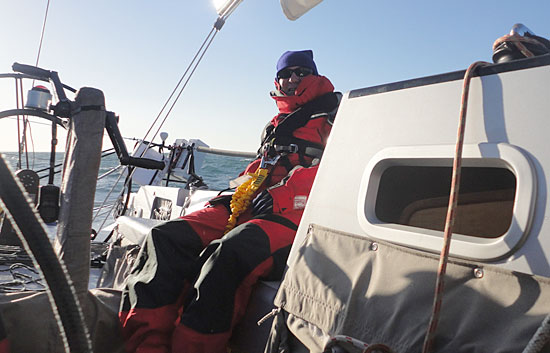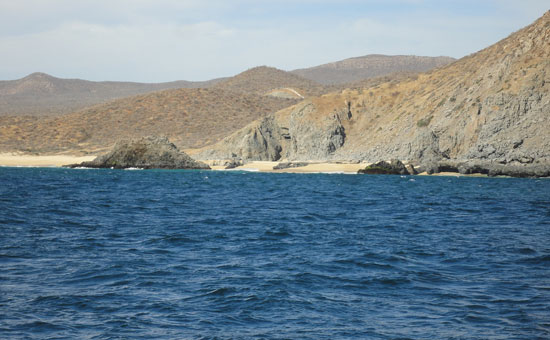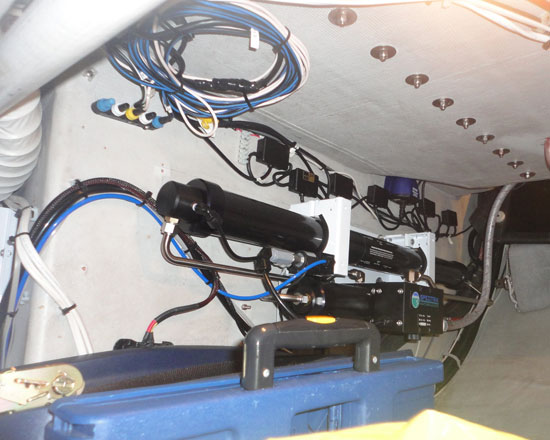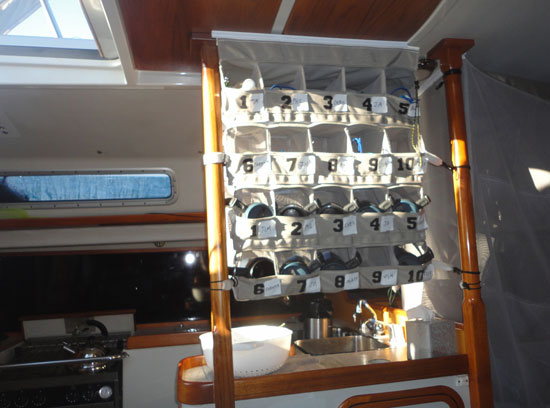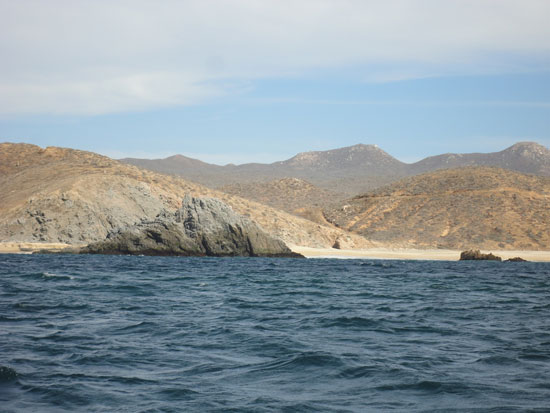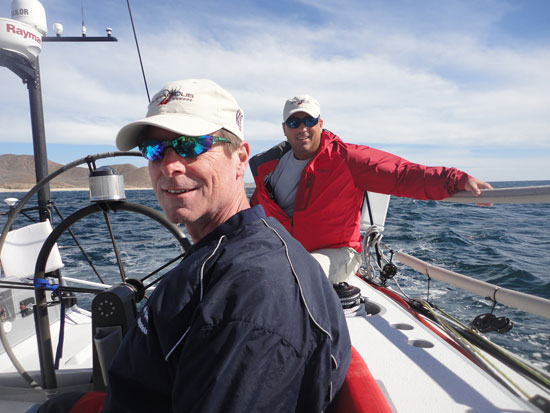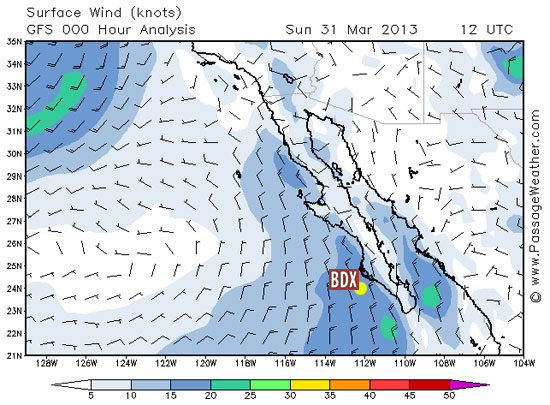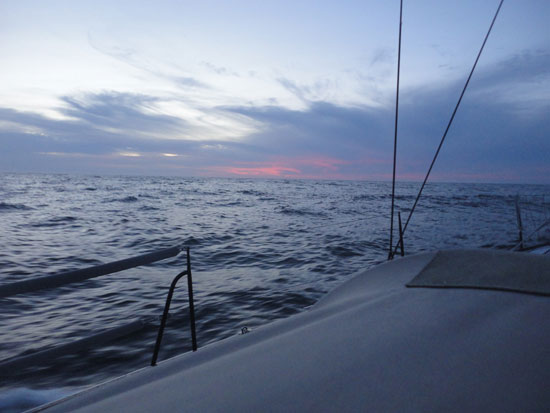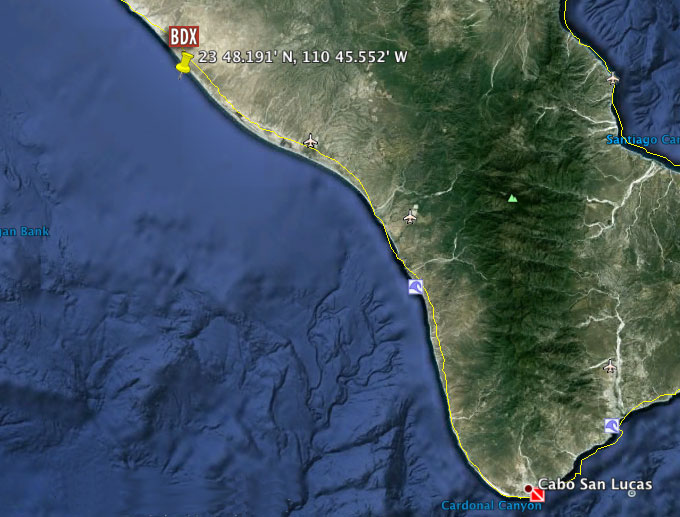Well, it was quite the breezy day today out here Monday on the Baja coast. We’ve saw the winds spike as high as 30 knots and coming at us from various directions depending on how near or far from the coast we were. Such wind variations are caused by what are called “land effects.” What happens is that additional winds are created when the land heats up from the sun and the relative warmth compared to the coldness of the water causes a “thermal transfer” as the warm air rising off the land pulls in the cool ocean air underneath it. So, it’s been a day with a lot of back and forth, up and down depending on the winds and where we are! At the same time, the skies have been clear and the sun bright!
We have been seeing whales, but from a too far a distance for us to get any good videos of them. If you watch the horizon for a while though, you are sure to see them spouting … breathing out an upward gush of air and water. It truly looks just like the drawings or pictures in the books you read! In the three days we’ve been out here so far, on day one, we saw the one humpback whale wave its tail at us as we left the corner of Cabo San Lucas. Yesterday, we saw three whales while we were being entertained by a colony of seals. Today, we saw two spouts off our starboard (right) bow – but again, a bit too far away to capture in photos or videos. So, I’m going to say that was TWO whales too! We’ll keep a whale count and see how many we see through the entire trip.
Right now it’s a dark night and the moon has just started to rise. The stars are amazing as they always are, when you are away from the light of urban areas, where what is called “light pollution,” makes it difficult to see so many of the stars. The Milky Way, which is a swirling path of concentrated stars across the sky, was particularly brilliant tonight. Typically on dark nights, you also get to see phosphorescent plankton, but so far this trip, we haven’t seen any of it. I’m hoping that we’ll see some soon, and I can describe to you what we see … it is truly a beautiful thing nature shares with us …the plankton illuminate as the water is stirred up … like sparkles on a flowing black dress .
So, we learned another one of life’s valuable lessons today, which is to always check and take care of your equipment. Maybe it’s only your bicycle; or the brakes on your car, an important tool you need to do your job, or the computer you do your schoolwork on. For us today, it was the autopilot. It suddenly stopped working for us … and at a very bad time. The autopilot is a gizmo that uses a computer and a compass, to control a hydraulic rod that pushes or pulls to keep the boat going in a straight line. Late tonight, it stopped working just as we were rounding a point of land. Fortunately, I was at the navigation station at the time and saw the alarm, but it still took a few minutes for us to shut it off and steer the boat safely away from the point of land. What we discovered after crawling all through the back of the boat, was that one of the power leads was loose on its terminal. Once we got that corrected, it came back to life and we were back in business.
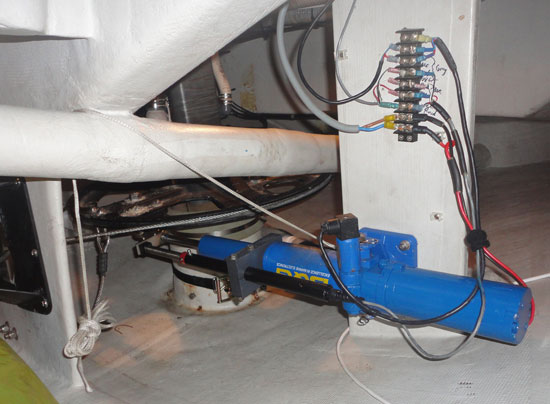 Here’s the autopilot, manually restored!
Here’s the autopilot, manually restored!
We’re all grateful to have it back, because with the wind and waves all stirred up as they were, standing at the wheel for long periods of time can get pretty uncomfortable. Imagine trying to concentrate on your job while someone is full-spraying a garden hose at you. So, always remember to check your equipment and make sure everything is working right before you head out on a bicycle ride or long car trip!
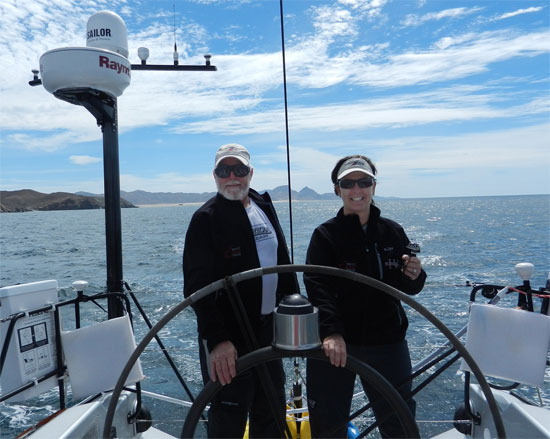
Dave & Heather – a small compass in her hand and a big one in front of the wheel.
There was a question posted to us on compasses, so in response, Dave interviewed the very knowledgable Heather on the subject. It’s great and informative stuff. Unfortunately, the audio w/the wind noise is a real challenge to understand … so, we didn’t post the video here … but, if you are the determined sort, it’s on our YouTube Channel … Part 1 of that interview is HERE and Part 2 is HERE!
So, that’s it for now. We hope we find and see more whales and maybe even some turtles in Turtle Bay on Tuesday when we stop and refuel there for the second part of our trip.
– Dave R., Tim Heather, Jonathon and Dave H.
Bodacious Dream Expedition Day #3 Position:
Position: 27 00.549′ N, 114 06.466′ W
Boat Speed: 6.2 knots
Course: 293 degrees

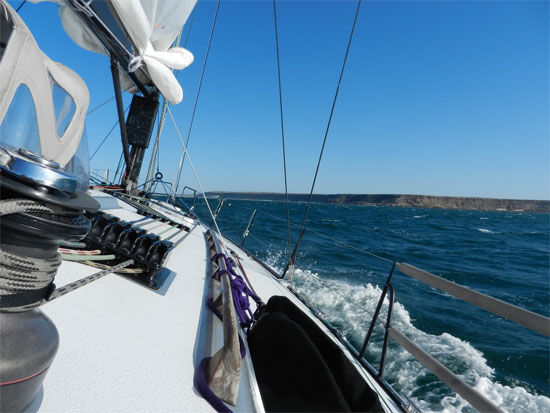
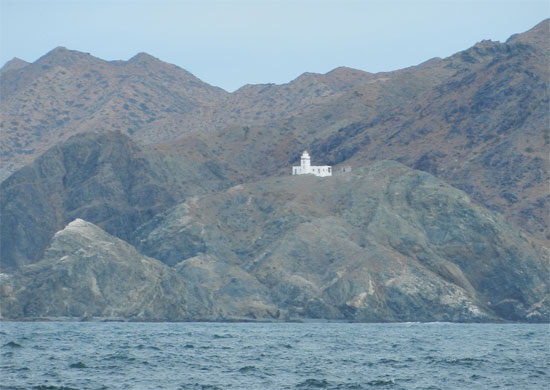
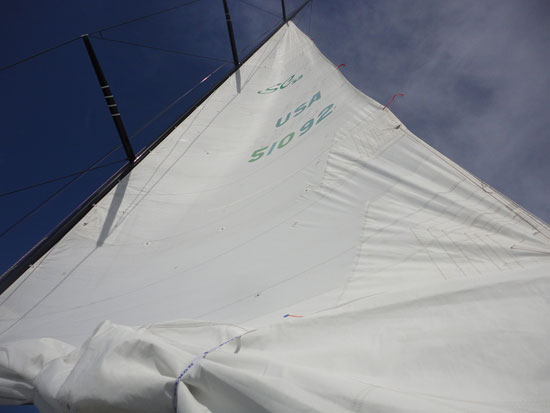 Mainsail in “2nd reef” position
Mainsail in “2nd reef” position